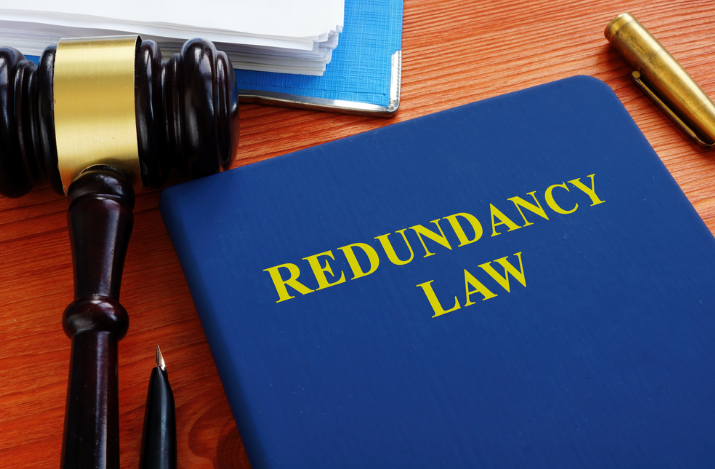Navigating redundancy can be a daunting experience, especially when it comes to understanding the impact on your pension and maximising your redundancy entitlements. Many employees facing redundancy in Ireland are unaware of the various options available, particularly how to structure their redundancy payments in a tax-efficient manner. Whether you’re considering a PRSA (Personal Retirement Savings Account) transfer to retain tax-free lump sum benefits or trying to decode the intricacies of ex-gratia and statutory payments, the choices you make now can significantly influence your future financial well-being. By the end of this guide, you’ll have a clearer understanding of Irish redundancy entitlements and how they intersect with pension transfers, helping you make strategic decisions for a secure retirement.
REDUNDANCY & PENSION GUIDANCE IN IRELAND
If you’re facing redundancy, understanding your financial entitlements is crucial. Your redundancy package can significantly impact your pension and future financial security.
Our expert advisors help you navigate your options to maximise tax-free benefits and secure your long-term financial well-being.
Facing Redundancy? Make Informed Financial Decisions
UNDERSTANDING YOUR REDUNDANCY ENTITLEMENTS
1. Statutory Redundancy Entitlement
- A legally mandated payment that employers must provide.
- Completely tax-free for employees.
- Calculated as: Two weeks’ pay per completed year of service + one additional week (capped at €600 per week).
2. Ex-Gratia Redundancy Payment
- An additional, discretionary payment from your employer as a goodwill gesture.
- A portion is tax-free, but the remaining balance is taxed at your marginal rate.
MAXIMISING YOUR TAX-FREE REDUNDANCY PAYMENT
There are three methods to calculate the tax-free portion of your Ex-Gratia payment:
1. Basic Exemption
- Tax-free amount: €10,160 + €765 for each completed year of service.
2. Increased Exemption (if applicable)
- Tax-free amount: €10,160 + €765 per completed year of service + €10,000 (minus any previous redundancy or pension tax-free lump sums received in the past 10 years).
- Choosing this option means waiving your right to a tax-free pension lump sum in the future.
3. Standard Capital Superannuation Benefit (SCSB)
- Tax-free amount formula: (Average earnings over the last 36 months × years of service) ÷ 15.
- This method can potentially offer a higher tax-free sum, but you must decide whether to retain or waive your tax-free pension lump sum.
SCSB CALCULATION OPTIONS
The SCSB calculation differs slightly if you waive or retain your pension lump sum.
- SCSB – Waiving Pension Lump Sum: (Average earnings over past 36 months × years of service) ÷ 15
- SCSB – Retaining Pension Lump Sum: (Average earnings over past 36 months × years of service) ÷ 15 minus pension tax-free lump sum
PENSION TRANSFER OPTIONS AFTER REDUNDANCY
Upon leaving employment, you have several pension transfer options. Each choice impacts your tax benefits and accessibility to funds.
Your Pension Transfer Choices:
- Leave it in your former employer’s scheme
- Transfer it to a new employer’s scheme (if available)
- Transfer it to a Personal Retirement Bond (PRB)
- Transfer it to a Personal Retirement Savings Account (PRSA) (for tax-free lump sum retention)
Important Considerations
- If you choose an increased tax-free redundancy payment by waiving your pension lump sum, you can only regain a tax-free lump sum if you transfer your pension into a PRSA. None of the other transfer options allow for a tax-free pension lump sum.
PRSA TRANSFERS: A TAX-EFFICIENT RETIREMENT STRATEGY
Transferring your pension into a PRSA ensures you retain your tax-free lump sum entitlement (25% of the transfer value).
You might also like our post on Prsa Pension Ireland: How Prsa Pensions Can Help You Prepare For Retirement.
Accessing Your PRSA:
- Standard retirement age: 60
- Early access: From age 50, provided you are fully retired (i.e., no PAYE employment income)
Planning to return to work? Retiring your PRSA before re-employment ensures:
- Immediate access to your tax-free lump sum
- The remaining 75% can be transferred into an Approved Retirement Fund (ARF)
- Flexibility to leave funds in the PRSA if immediate access isn’t required
PRSA TRANSFER REQUIREMENTS: INDEPENDENT REPORT NEEDED
Transferring from an occupational pension scheme (Defined Benefit or Defined Contribution) into a PRSA requires an Independent Statement of Comparison of Benefits Report.
Only a limited number of authorised companies in Ireland provide this report to meet Revenue requirements.
STEP-BY-STEP GUIDE: TRANSFERRING FROM A PREVIOUS EMPLOYER INTO A PRSA
STEP 1
Complete and return your Leaving Service Options document (issued by your former employer’s pension department).
Uncertain about your redundancy rights? Enquire now for expert financial advice tailored to your situation.
Related read: Overseas Pension Advice Ireland: How To Maximize Your Overseas Pension Benefits While Living In Ireland.
STEP 2
Submit a PRSA application form with your chosen provider.
Ready to maximise your tax-free redundancy payment? Book a consultation now to explore your options.
STEP 3
Obtain a Statement of Comparison of Benefits Report from a regulated financial expert.
STEP 4
If retiring your PRSA immediately, complete an ARF application (usually with the same provider).
Recommended: Previous Pension Tax Implications In Dublin.
MAKE AN INFORMED DECISION WITH EXPERT GUIDANCE
Choosing the right redundancy and pension transfer option is essential to protect your financial future. Many redundancy package calculations overlook long-term pension implications, leading to costly mistakes.
Our expert financial advisors provide personalised guidance to help you:
- Maximise tax-free redundancy payments
- Optimise pension transfer strategies
- Ensure compliance with Revenue regulations
- Secure your long-term financial future
FAQ’S:
1. What is statutory redundancy entitlement in Ireland?
Statutory redundancy entitlement is a legally mandated payment that Irish employers must provide to employees who have been made redundant. The amount is based on the employee’s length of service and is completely tax-free. Employees are entitled to two weeks’ pay for each completed year of service, capped at €600 per week, plus an additional week’s pay.
You might also like our post on Understanding The Benefits And Risks Of Pension Transfer In Ireland.
2. How are ex-gratia redundancy payments taxed?
Ex-gratia redundancy payments are discretionary sums paid by employers in addition to statutory redundancy. While a portion of this payment can be received tax-free, any amount exceeding the allowable limits is taxed at the employee’s marginal rate. It is important to calculate this carefully to maximise tax-free benefits.
3. What are the tax-free redundancy payment options available?
There are three main options for tax-free redundancy payments: the Basic Exemption, the Increased Exemption, and the Standard Capital Superannuation Benefit (SCSB). Each option provides different tax relief based on years of service and previous redundancy or pension lump sum payments received.
Facing redundancy and unsure about your next steps? Book a consultation for comprehensive pension planning assistance.
Can I transfer my pension after redundancy?
Yes, after redundancy, you can transfer your pension to another employer’s scheme, a personal retirement bond (PRB), or a personal retirement savings account (PRSA). Each option has its own benefits and tax implications, so it’s crucial to understand which one suits your financial goals and retirement plans.
Secure your financial future with the right pension strategy. Enquire now for personalised guidance on redundancy payments.
Related read: Understanding Redundancy Payment Options In Ireland.
What is a PRSA and how does it benefit redundancy pension transfers?
A Personal Retirement Savings Account (PRSA) is a flexible pension solution that allows individuals to retain their tax-free lump sum entitlement. When transferring your pension after redundancy, a PRSA can be particularly advantageous if you wish to access your retirement funds before the standard retirement age without the restrictions of an occupational pension scheme.
Why do I need an independent report for a PRSA transfer?
When transferring assets from an occupational pension scheme to a PRSA, the Revenue requires an Independent Statement of Comparison of Benefits Report. This report ensures that you are fully informed about the differences in benefits between your existing pension scheme and the PRSA, enabling you to make a well-informed decision regarding your retirement planning.
CONCLUSION
While facing redundancy can feel overwhelming, it is essential to approach your financial future equipped with the right knowledge and support. You must understand the distinctions between statutory and ex-gratia payments, as well as how to maximise tax-free benefits, which can significantly impact your retirement planning. By exploring your statutory redundancy entitlements and calculating your potential tax-free lump sums, you can take control of your financial situation during this transitional period.
Recommended: Prsa Pension Scheme For The Self Employed: What You Need To Know.
Remember, navigating redundancy and pension options requires careful consideration and tailored advice. Consulting with an expert who understands Irish pension schemes will help you make informed decisions that align with your long-term goals. Whether you’re evaluating PRSA transfers or need clarification on eligibility criteria for tax-free payments, having a trusted advisor by your side ensures that you don’t miss out on valuable benefits.
At Money Maximising Advisors, we understand the importance of making the right financial decisions during redundancy. Take the first step towards a secure future by booking an advisor today.




